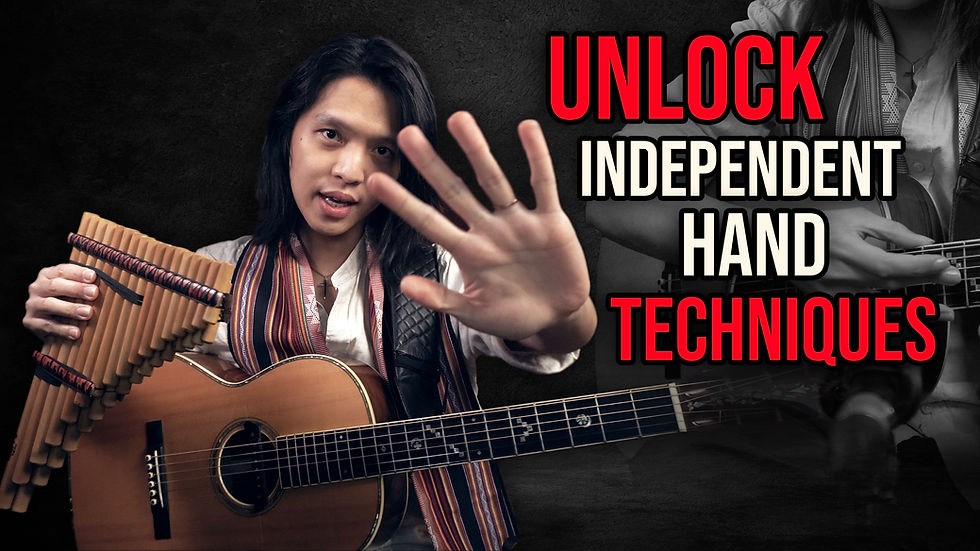Why All Musicians Should Learn Carnatic Music
- Neil Chan

- Nov 5, 2021
- 3 min read
Introduction
I'm going to advocate for carnatic or South Indian classical music, that it has tremendous value to musicians of all styles and genres, and that every musician should at learn at least a little of it. I've studied carnatic music for over five years now and as a musician trained in western music it has been extremely eye and ear-opening to me, and I strongly believe it can be to you as well! Let me now try to convince you to dip your hands into the intricate world of carnatic music.
Welcome to 'Ethnomusicology For The World', my online lesson series where I strive to help the world better understand and appreciate its diverse musical cultures.
Before You Begin:
Download my free resources to guide you along!
Two Core Elements of Carnatic Music
While there are many important aspects of carnatic music, today we're just going to look at the two core elements: shruti (melody) and laya (rhythm).
While you will definitely find melody and rhythm in perhaps every single musical culture in the world, it is the sheer complexity and intricacy of these two elements that sets carnatic music apart from the rest. As the concept of harmony essentially doesn't exist in carnatic music, both melody and rhythm are unrestrained and free to develop to these remarkable heights.
Carnatic music teaches you to count
And I mean really, really count. The rhythmic foundation is formed by 'tala cycles', similar to meter in western music. The most common is an eight-beat cycle called adi tala. Simple enough, but wait, it gets crazier.
Within those 8 beats you can subdivide each into what is called 'gatis'. Essentially, each beat can be divided into 3, 4, 5, 6, 7, 8, or 9 subidvisions. Yes, if we consider 8 subdivisions, you have to count 8x8=64 sub-divisions per cycle. Now within those 64 sub-divisions you can divide them into a myriad of mathematical patterns. For example you could do 8+8+16+8+24=64, and that's just one of the simpler ones.
In my personal experience, studying carnatic rhythms has enabled me to quickly process and understand rhythms from cultures all around the world with ease. These include Afghan music and flamenco rhythms, which would be very challenging if I only had a background in western music.
Music Example: 'Adi Tala Korvai #3'
Carnatic music teaches you to Listen
And again I mean really, really listen. The melodic foundation is formed by what are called 'ragas', which bear resemblance to western modes or scales. Essentially a specific raga determines how a certain number of melodic entities called svaras are arranged by pitch, how they move, glide, oscillate, or stay completely still.
What this means is that no longer are notes just pitches, but organic entities that are characterised not only by their frequency of vibrations but by the specific manner their frequencies change over time. And to identify these svaras requires us as musicians to listen extremely keenly.
Watch the video to listen to a demonstration of a raga!
Music Application: How to Get Started
Now we've talked a lot about how great it is as musicians to learn carnatic music. The question is: How do we learn it?
The best way is of course to get an experienced teacher to meaningfully guide you every step of the way. However, not all of us have the time, money, or access to such a valuable resource.
Understand the principles of carnatic music
The next best approach, in my opinion, is not to learn the music itself in any great detail, but to understand HOW the music works. What I've described earlier is merely an entry point. You need to do your own digging by listening and reading to better grasp the essence of the music. What's the point of doing this?
If you can truly appreciate the freedom of melodic and rhythmic expression in carnatic music, you can start to apply some of these ideas to your own style of music. For example, you can think of rhythm in artistic mathematical patterns rather than simply groove.
Watch the video for an example of embedding a mathematical pattern within a rhythmic groove!
Conclusion
I hope this little sharing of my experiences with carnatic music has sparked an interest in you to explore it further. I do have lots of videos going deeper into carnatic rhythms in detail, and lots more to come which I'm excited to share with you!
Do leave a comment with any questions you might have and I'll do my best to answer them. Follow along my musical journey on my YouTube, Instagram, Facebook, and website as I share new music videos and lessons each and every week.
Until next time, I'll see you again!
By Neil Chan

.png)




Comments